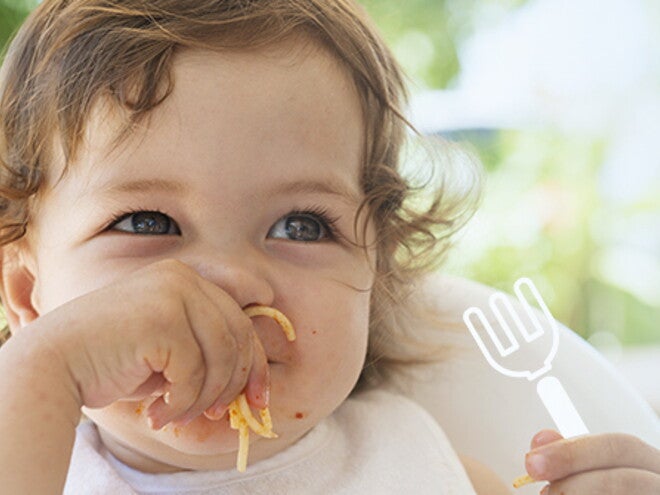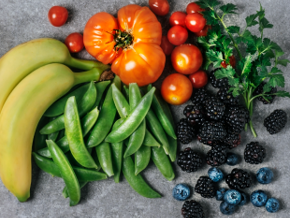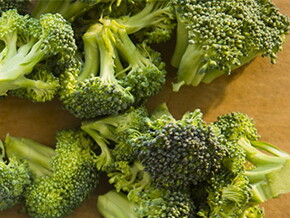
One of the best ways to maximize your baby’s chances of continuing to be a healthy eater in later years is to encourage diet variety as early as possible. Always offer your 10-12-month-old healthy foods in a warm family environment, at meal and snack times, every day.
In some countries, less than half of 6-12-month-old babies eat vegetables each day. Even if your baby initially rejects them, keep offering fruits and vegetables to increase the likelihood he will begin to eat them more readily. Research also shows that, for some older babies, sweet foods are entering their diets at an alarming rate. If sweet foods and drinks fill your baby’s small tummy, there may not be room for healthy, nutritious foods. Show him what a healthy diet looks like. Seeing you and the rest of the family happily eating a variety of food from the five food groups—fruits, vegetables, protein foods, grains, and dairy—will help encourage him to do the same.
Respect your baby’s choices
Your little one is becoming more independent by the day. Allow him to pick up and touch his food, exploring it with all his senses. Remember the first principles of responsive feeding are that you offer a variety of healthy foods at regular meal and snack times, and your baby decides if, and how much, he chooses to eat. Pay attention to the hunger and fullness cues he shows you and never try to force him to finish the food on his plate.
Sources
Deming D, Reidy K, Briefel R, et al. Feeding Infants and Toddlers Study (FITS) 2008: Amount and type of vegetables change after the first year of life. Experimental Biology, San Diego, US, April 21-25, 2012 FASEB (abstract).
Caton SJ, Blundell P, Ahern SM, et al. Learning to eat vegetables in early life: the role of timing, age and individual eating traits. PLoS One 2014; 9(5):e97609.
Mura Paroche M, Caton SJ, Vereijken C, et al. How infants and young children learn about food: A systematic review. Front Psychol 2017;
8:doi.10.3389/psyg.2017.01046.
Nicklaus S. Complementary feeding strategies to facilitate acceptance of fruits and vegetables: A narrative review of the literature. Int J Environ Res Public Health 2016; 13(11):1160; doi: 10.3390/ijerph13111160.


















